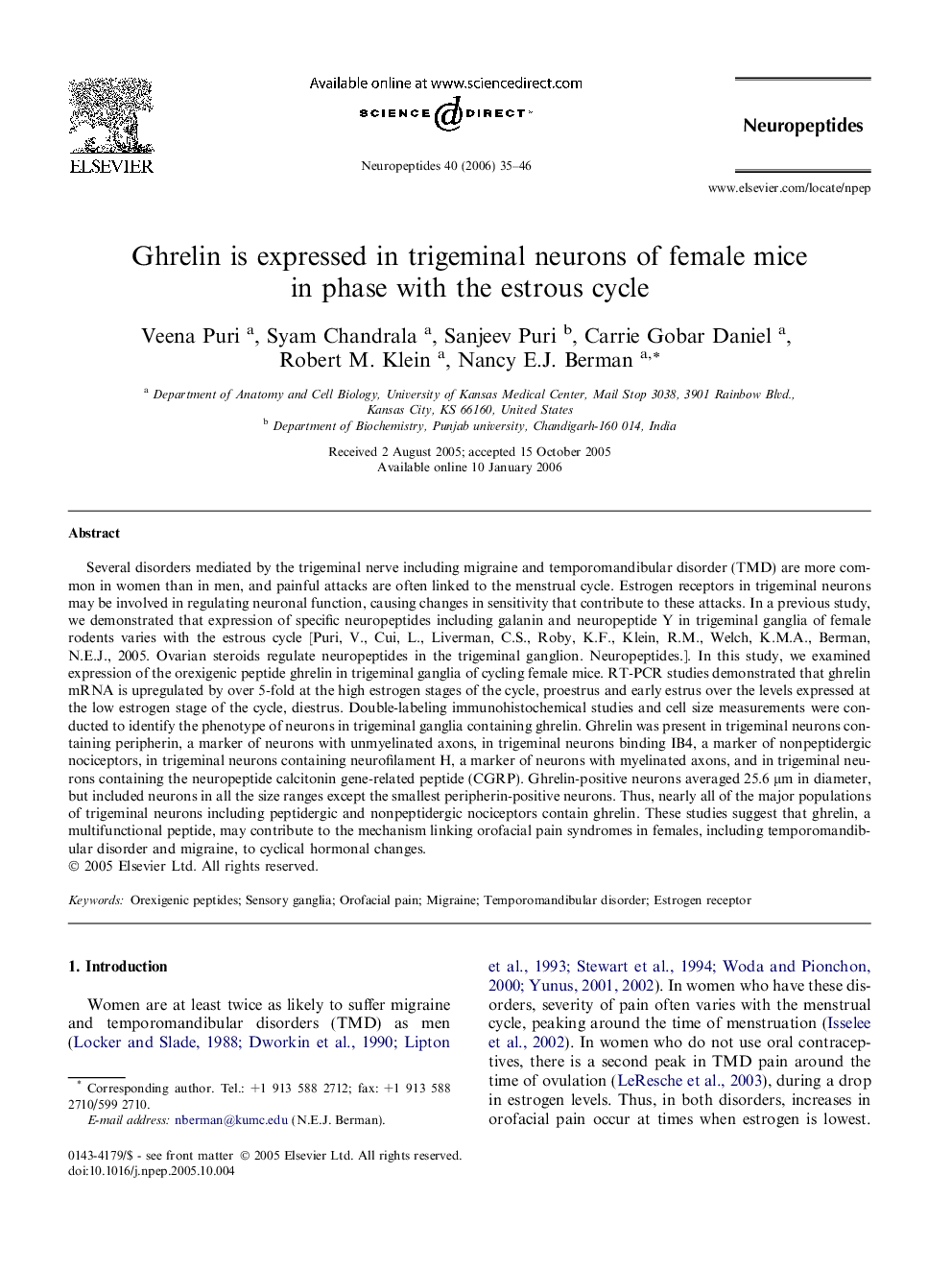| Article ID | Journal | Published Year | Pages | File Type |
|---|---|---|---|---|
| 2808468 | Neuropeptides | 2006 | 12 Pages |
Several disorders mediated by the trigeminal nerve including migraine and temporomandibular disorder (TMD) are more common in women than in men, and painful attacks are often linked to the menstrual cycle. Estrogen receptors in trigeminal neurons may be involved in regulating neuronal function, causing changes in sensitivity that contribute to these attacks. In a previous study, we demonstrated that expression of specific neuropeptides including galanin and neuropeptide Y in trigeminal ganglia of female rodents varies with the estrous cycle [Puri, V., Cui, L., Liverman, C.S., Roby, K.F., Klein, R.M., Welch, K.M.A., Berman, N.E.J., 2005. Ovarian steroids regulate neuropeptides in the trigeminal ganglion. Neuropeptides.]. In this study, we examined expression of the orexigenic peptide ghrelin in trigeminal ganglia of cycling female mice. RT-PCR studies demonstrated that ghrelin mRNA is upregulated by over 5-fold at the high estrogen stages of the cycle, proestrus and early estrus over the levels expressed at the low estrogen stage of the cycle, diestrus. Double-labeling immunohistochemical studies and cell size measurements were conducted to identify the phenotype of neurons in trigeminal ganglia containing ghrelin. Ghrelin was present in trigeminal neurons containing peripherin, a marker of neurons with unmyelinated axons, in trigeminal neurons binding IB4, a marker of nonpeptidergic nociceptors, in trigeminal neurons containing neurofilament H, a marker of neurons with myelinated axons, and in trigeminal neurons containing the neuropeptide calcitonin gene-related peptide (CGRP). Ghrelin-positive neurons averaged 25.6 μm in diameter, but included neurons in all the size ranges except the smallest peripherin-positive neurons. Thus, nearly all of the major populations of trigeminal neurons including peptidergic and nonpeptidergic nociceptors contain ghrelin. These studies suggest that ghrelin, a multifunctional peptide, may contribute to the mechanism linking orofacial pain syndromes in females, including temporomandibular disorder and migraine, to cyclical hormonal changes.
